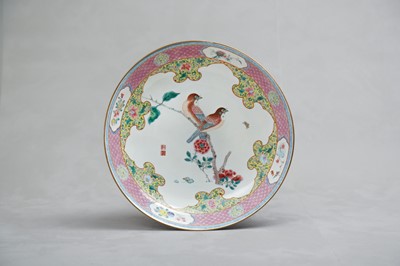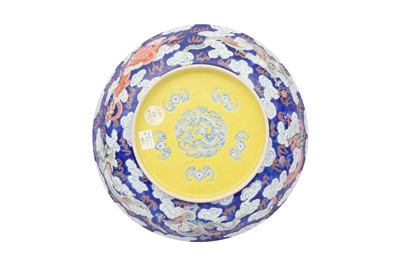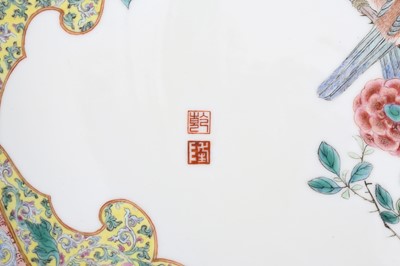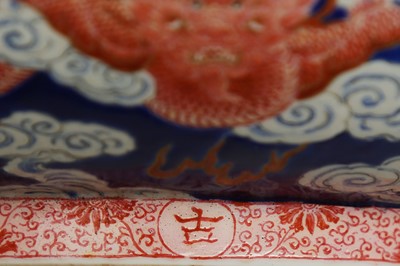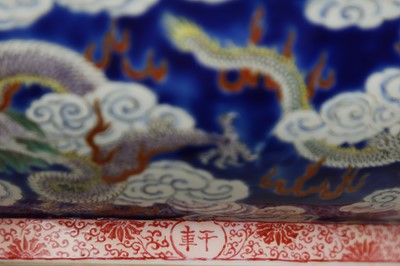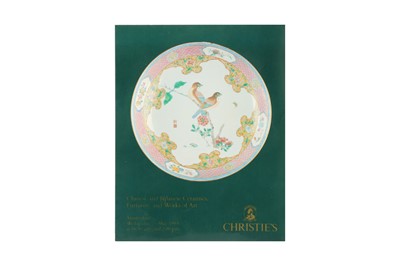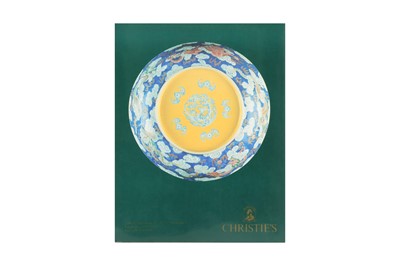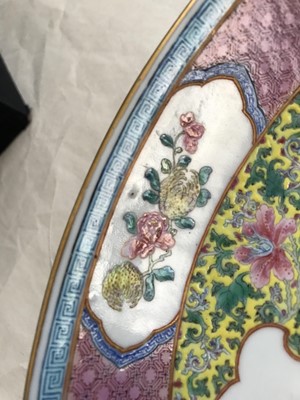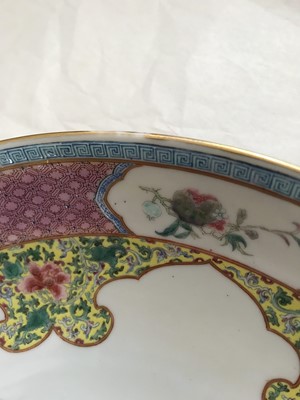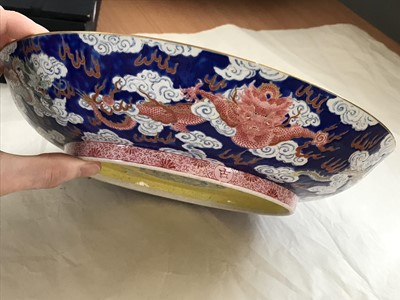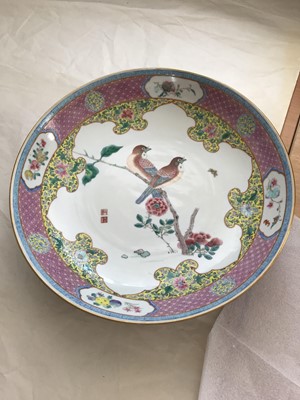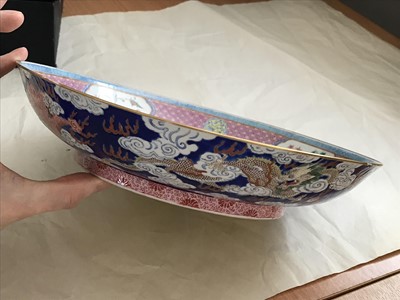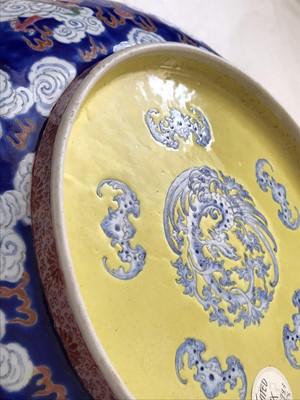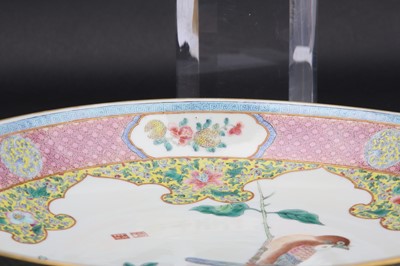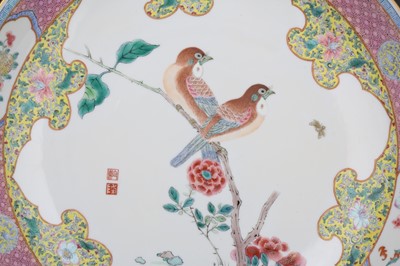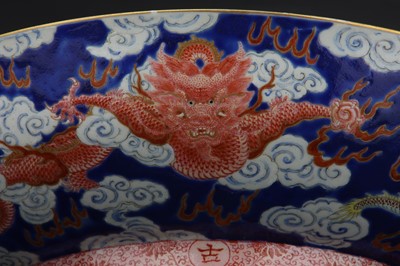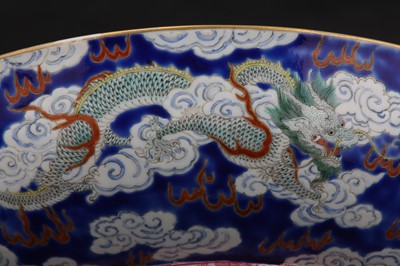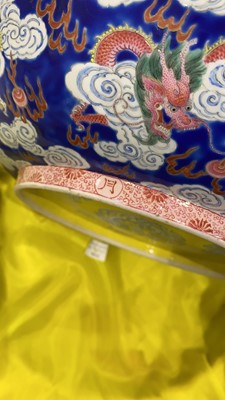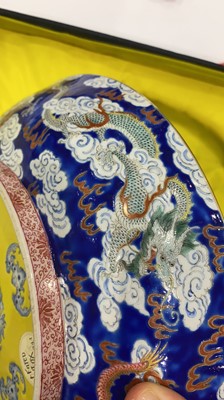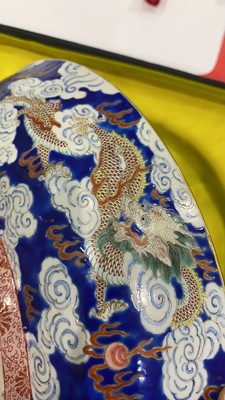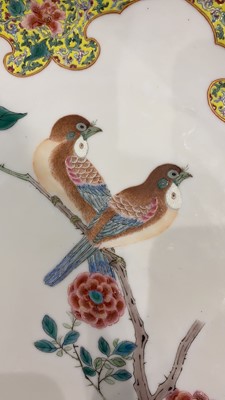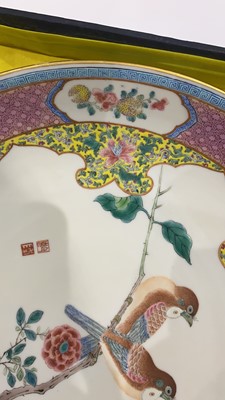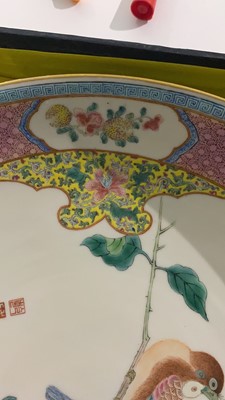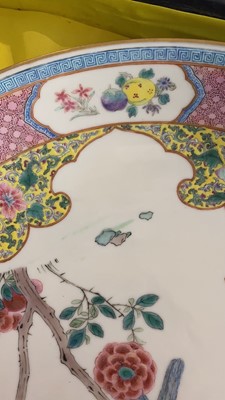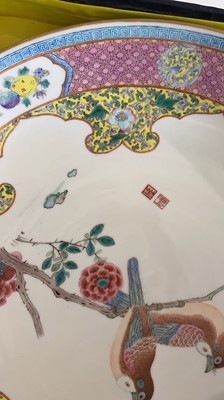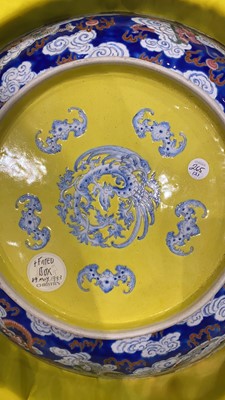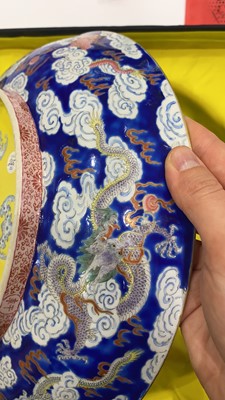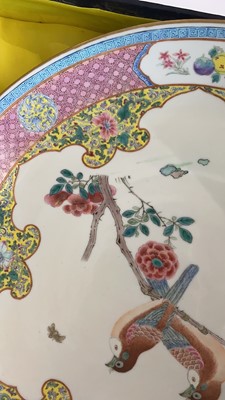16th May, 2022 11:00
Asian Art I
A CHINESE FAMILLE ROSE ‘BIRDS’ DISH.
A CHINESE FAMILLE ROSE ‘BIRDS’ DISH.
Qing Dynasty, Qianlong period two character seal mark and of the period.
The interior finely painted with a central panel painted with a pair of birds sitting on a branch observing a butterfly in flight, within a border shaped as six inverse ruyi heads filled with flower heads borne on colourful foliage on a yellow ground, within a further wide pink diaper border set with panels depicting fruiting branches of pomegranate, peaches, finger citron and melons, and divided by a kui dragon roundel, beneath a band of blue key scroll, the borders each partitioned by a thin band of gilt, the exterior decorated with five five-clawed dragons, one front-facing and grasping a flaming pearl in its left front claw, the others writhing with contorted bodies in pursuit of a pearl, each vividly and individualistically painted among clouds and gilt-heightened flames, against a lapis-blue ground, the base decorated with a phoenix, its body and tail feathers curved over the lowered head, and wings spread to form a circular roundel, encircled by five bats against an Imperial yellow ground, the foot decorated with a lotus scroll border with three equally-spaced circular cartouches, bearing the three characters Gu, Yue and Xuan, the interior with two seals, together bearing the two characters Qianlong, 28cm diameter, boxed.
Provenance: Chinese and Japanese Ceramics, Furniture and Works of Art, Christie's Amsterdam, 19 May 1993, lot 119 [front and back cover lot].
清乾隆 洋彩繪花鳥圖紋盤,「古月軒」「乾」「隆」款
來源:佳士得阿姆斯特丹1993年5月19日119號拍品(圖錄封面拍品)。
The long reign of the Qianlong Emperor, 1736 – 1795, built on and perfected many of the artistic traditions consolidated by the Kangxi and Yongzheng Emperors, and in the field of porcelain none more than the rich spectrum of yangcai or ‘foreign colour’ enamel decoration.
The application of the yangcai, initially introduced to the Imperial Workshops at the Qing court by European Jesuit craftsmen, and subsequently embraced by Tang Ying (1682 – 1756), was a true synthesis of Eastern and Western technological and artistic traditions.
The mixture of traditions and styles is highlighted by the distinctive decorations of the three planes of the piece: the sides (dragons), interior (birds) and base (phoenix and bats). The decorative border of the interior and the treatment of the dragon roundel of the base, strongly recall the decorations of Peking enamelware on copper, this rooting the piece strongly within a flavour for Western decorative tastes for which the Emperor was known. If the vase is compared to the pair of Peking enamel Qianlong vases from the Imperial collection in the National Palace Museum illustrated in Radiant Luminance : the Painted Enamelware of the Qing Imperial Court, 2012, p 159, plate 119, we will see the same pink floral band around the foot, the significant difference in colouring of different decorative registers and the presence of decorative panels set within bands of decoration, all of which had previously been considered markers of European taste, prior to being embraced within the context of yangcai wares.
Despite the overtly decorative nature of the piece, the vestiges of High Imperial Qing taste within the piece are subtly hidden. The mark of the Qianlong Emperor is unusually codified within two seal marks on the interior of the piece, whilst the palace mark, Gu yue xuan, is carefully placed within a decorative border around the foot of the dish. Even the four fearsome five-clawed dragons are left hidden when the dish is left on the table.
Sold for £81,250
Includes Buyer's Premium
Do you have an item similar to the item above? If so please click the link below to submit a free online valuation request through our website.

